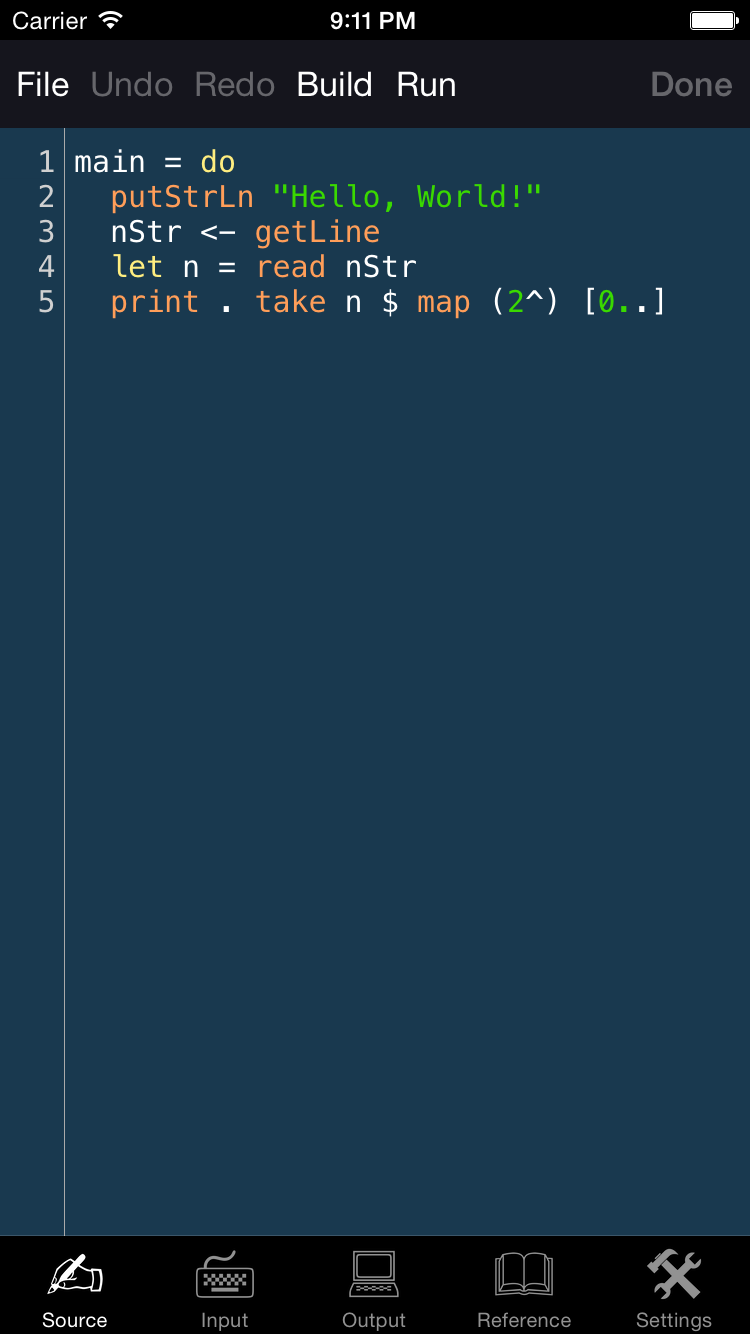

Well-Typed's the Cloud Haskell project attempts to simulate the implementation of Erlang/ OTP in Haskell, the project is currently stalled. Elixir language project introduced Ruby syntax and attracted developers from the Ruby On Rails community! The Akka project imitated the implementation of Erlang/OTP, but lost the soft real-time feature of Erlang/OTP.

Since 2008, there have been about 20 projects in the industry trying to solve the problem.

#HASKELL PROGRAMMING LANGUAGE LOGO SOFTWARE#
A powerful compile-time type system helps build more reliable software systems while a more friendly syntax helps to build a prosperous developer community. However, from years of experience developing Erlang programs, we have been looking to solve two problems: the compile-time type system and the more friendly language syntax. With amazing concurrency, distribution and fault tolerance, it is one of the few general-purpose language platforms able to properly handle concurrency and soft realtime. So, we have always believed that Erlang is a masterpiece of engineering. Why Hamler?įor almost a decade, we have been developing software systems based on Erlang/OTP, especially our main product EMQX - the scalable open-source MQTT broker. It empowers industries to build the next generation of scalable, reliable, realtime applications, especially for 5G, IoT and edge computing. Hamler is a strongly-typed language with compile-time type checking and built-in support for concurrency and distribution. If we're going for brevity, we can then inline split to gain - | Sorts the given list in an ascending order.īut that's up to personal preference, as the compiler will inline split anyway.We are proud to announce the first public release of a new open-source functional programming language - Hamler. It's sometimes a good idea to generalize the query a little bit, for example to -> (,), as Hoogle also scans parts of the type signature. Split x = partition ( a -> -> (,) does not yield partition. If we apply that we end up with quickSort :: (Ord a) => -> functions are usually named in camelCase instead of snake_case, so we'd call it quickSort.split has a little bit of duplication that we can remove with a single where clause.split is generic enough to be defined at top-level."base case" and "recursive case" aren't commented in Haskell code, as they are everywhere."edge" and "general"` condition are usually called "base case" and "recursive case".and one for those that greater (gt) than xįor a while I am not able to compare two approaches, but on the worst cases (when list to sort is already sorted) it seems that my implementation is a bit slower.įirst of all, great that you used type annotations, as they're sometimes missing. My implementation quick_sort :: (Ord a) => -> In order to "improve" the above approach I have written my own implementation, where I use auxiliary local function split that splits a list into two parts: less than (or equal to) x and greater than x. Isn't the fact that those of a's that already in the smallerSorted list cannot be in the biggerSorted list, so we don't need to compare x with them anymore. The problem with this implementation (as I think) is doubled number of comparisons inside the let binding every time. Here it is: Book's implementation quicksort :: ( Ord a ) = > -> And there I have encouraged with "an elegant" realization of the quicksort sorting algorithm (the Quick, sort! section). I am learning Haskell programming language mainly from this source.


 0 kommentar(er)
0 kommentar(er)
